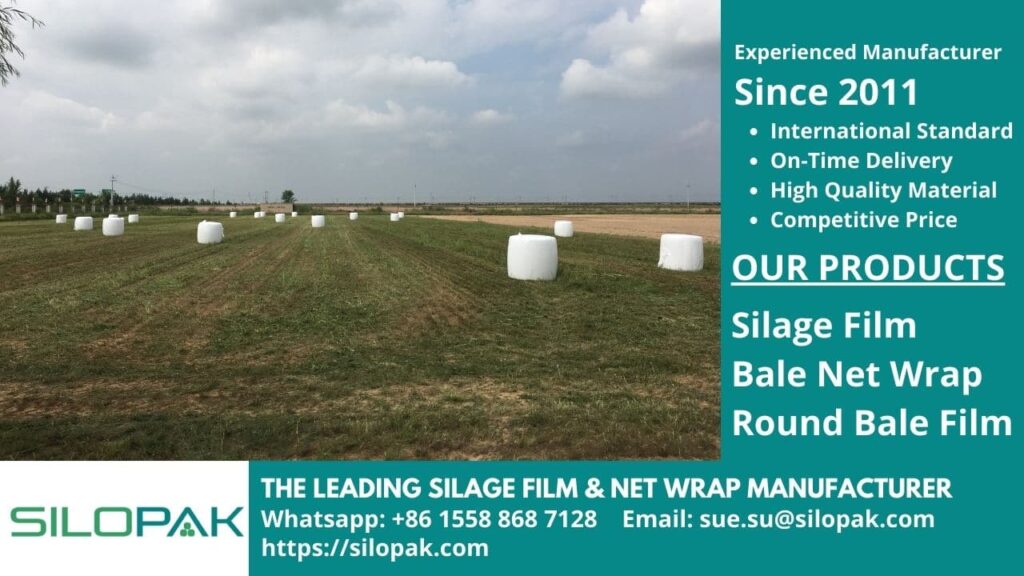The term “silage” might not be something familiar that you can use on a daily basis. The word simply means food in layman’s terms, but it is exclusively used to refer to one intended for animals, specifically cattle. So, the next question you could have perhaps is about why would it take an entirely new term just to refer to a kind of food for animals, right? Let’s take a look at this subject further.

The word silage refers to food for cattle; that much is correct. But what sets it apart from similar stuff is the fact that the term is applied to livestock food that has undergone a fermentation process as a means of preservation. It is composed of crops of green foliage, all fermented to achieve a sort of acidification.
Once ready, the food is fed to animals like cattle, sheep, and other ruminants. Ensilage, ensiling, and silaging are further terms used to refer to both fermentation and storing processes. Plant materials used in ensilage are taken primarily from grass crops such as corn and sorghum. These plants are taken into the process in their entirety, not only their seeds.
contents
The Production of Silage
Typical plant species that can be turned into silage include maize, rye, oats, vetches, alfalfa, clovers, and regular grass. In the production of this product, plants are chosen based on their moisture content. Their moisture content should not exceed 75%. The weather should also be supportive of the process of harvesting the crops. The harvested crops are then shredded. Afterward, they must be closely packed and spread uniformly on the base of a silo.
Fermentation of Silage
In the silo, silage undergoes fermentation of anaerobic variety. This process begins at least 48 hours after the silo has been filled with plant materials. The whole process will convert sugar contents in the materials into acids, and it takes around two weeks later for it to fully complete. Before the anaerobic stage commences, the aerobic phase takes place. It’s during this stage that all the trapped oxygen is depleted. There are two types of ensilage based on how the materials are arranged in the silo:
Sour Variety
Sour feed is created when the silo is closely packed, and oxygen supply is limited. The fermentation process will break down carbohydrates, turning them into acetic, butyric, and lactic acids.
Sweet Variety
Sweet feed is the result of fermenting loosely packed plant materials. Oxidation occurs faster in this arrangement, and the temperature rises more rapidly. Once the materials are all compressed, the process stops.
The process involved indigenous microorganisms in the past. Today, however, ensiling entails adding extraneous microorganisms to hasten the process. These extraneous microorganisms include Lactobacillus Plantarum, L. buchneri, Enterococcus faecium, and Pediococcus.
Of all potential silage materials, ryegrass is the most popular. This is because the grass is rich in sugars, and it responds to nitrogen-based fertilizer.
The Benefits of Using Silage

There are many benefits in feeding cattle with silage.
- Volatile Fatty Acids (VFAs) like butyric, lactic, propionic, and acetic acids are produced from the bacterial process that breaks down cellulose and carbs. As pH drops, these acids make the environment unsuitable for bacteria that could spoil the forage. In this sense, all of these acids are natural preservatives, which make it possible for farmers to keep feeding their cattle even during winter, which limits the availability of green forage.
- This kind of food possesses a level of acidity that adds flavors to the forage, which the animals may find delicious.
- Microorganisms fermenting the forage also produce vitamins. Lactobacillus, for example, produces both vitamin B12 and folic acid.
- It is less in caloric content compared to regular forage.
Now, as silage is notably delicate due to it being produced through the fermentation process, the handling of it is also a little bit complicated. A farmer must prevent further oxidation from exposure to oxygen to stop spoilage. While this may sound daunting, it is easy, provided that the farmer knows what tools to use.
Silopak offers all farmers requiring medium to protect their livestock feed from spoiling in the form of high-quality silage sealer and packaging. You can contact us for further information regarding our products.

